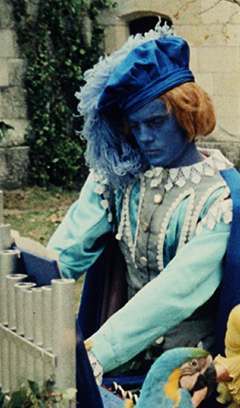
I am currently an Assisant Professor of Media and Cinema Studies in the College of Media at the Univeristy of Illinois at Urbana-Champaign. I have taught hundreds of students the intricacies of film history, style, and media production. I'm also a researcher interested in American and French cinema, the musical genre, dance in film, animation, VFX, the Harry Potter film franchise, and more.
For more information on what I do, you can read my full CV here.
Storytelling in Motion: Meaning and choreography in the film musical
My current book project illuminates the ways filmmakers have harnessed the narrative power of cinematic choreography—the interaction of dance and figure movement with the medium of film—to guide viewer attention and play with expectations of the musical genre.
This book unites interdisciplinary methods for contextualizing figure movement in cinema. I integrate archivally grounded formal analysis, genre theory, and practice-led approaches to studying the body, in particular videographic criticism and Laban/Bartenieff Movement Studies’ rich taxonomy of human movement. I then draw attention to the key historical mechanisms that affected filmmakers working in the traditionally expensive and movement-heavy musical genre to argue that choreographed movement does much of the narrative heavy lifting in cinema. Even more than characters’ speaking shifting to singing, the convention of figure movement shifting to dancing in defiance of diegetic norms communicates crucial narrative information. Moving bodies provide an aesthetic playground for filmmakers to guide viewers’ attention, toy with audience expectations, and build the rich perceptual and aesthetic pleasure the musical engenders.
The five case studies for this book are films produced in Hollywood and France, ones made after the studio era and created by filmmakers working within divergent industrial infrastructures. These examples are chosen for their emphasis on figure movement, their historical and formal complementarity, their aesthetic richness, the availability of archival and primary source documentation related to their production histories, and—for the later films especially—their relative underrepresentation in scholarly literature: West Side Story (1961), Les Demoiselles de Rochefort | The Young Girls of Rochefort (1967), Trois places pour le 26 | Three Seats for the 26th (1988), Jeanne et le garçon formidable | Jeanne and the Perfect Guy (1998), and La La Land (2016).
Storytelling in Motion puts the films from these cinematic traditions in conversation with one another to reveal how each film’s mode of production profoundly differed and how the resulting aesthetic, technological, economic, and social constraints shaped each filmmaker’s formal approach to the musical genre. My analysis of these musicals demonstrates the crucial—though often unperceived—functions dance and figure movement serve in guiding the film viewer to comprehend narrative meaning.